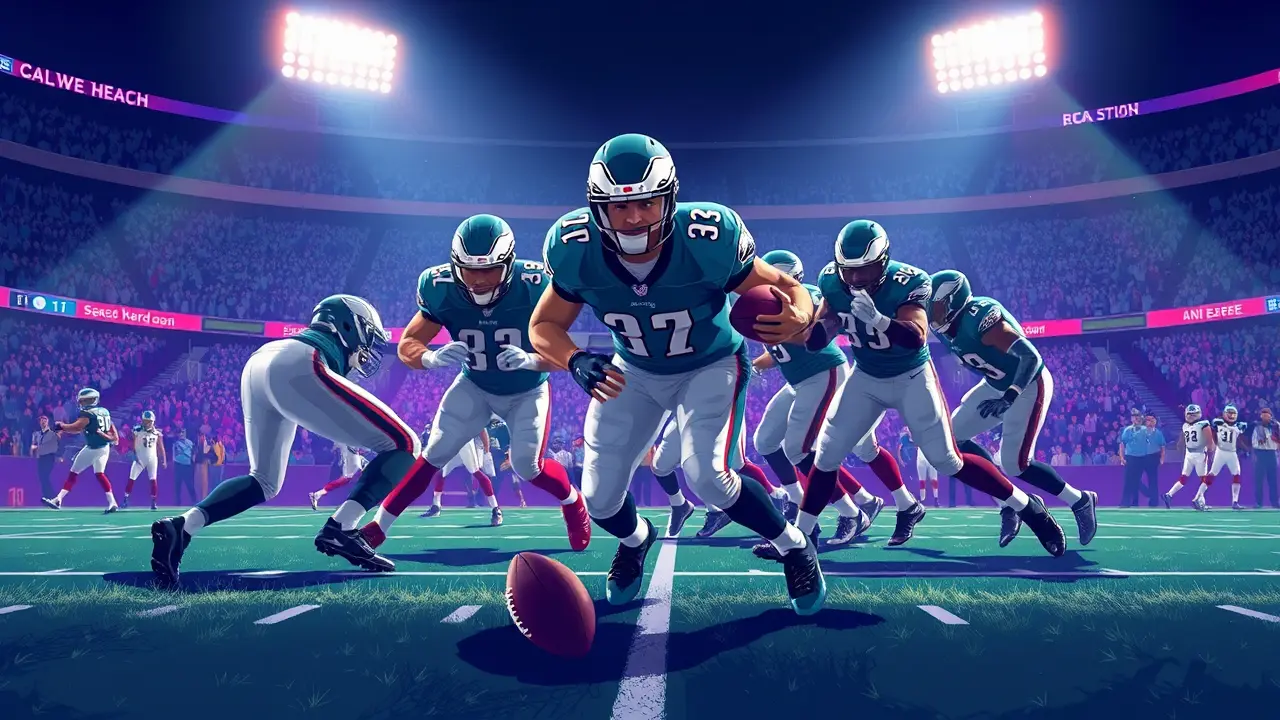Eagles Tush Push four straight plays vs Giants – for 3 yards and a touchdown
In the gritty, data-driven theater of modern NFL football, few sequences encapsulate the Philadelphia Eagles' brutal, unapologetic philosophy quite like the four consecutive 'Tush Push' plays they unleashed against the New York Giants on that October Thursday night. This wasn't just a goal-line stand; it was a statement, a three-yard, four-down war of attrition that culminated in a Jalen Hurts touchdown, a play that, upon review, seemed to hinge on a precariously timed movement from right guard Tyler Steen that went unflagged.The Eagles, trailing in a crucial divisional matchup, turned to their signature play—a short-yardage bulldozer that has become as much a part of their identity as the midnight green they wear. It’s a play that analytics love for its high-percentage success rate, yet one that purists and opponents alike decry as a blight on the game’s aesthetic, a rugby-style scrum that reduces the beautiful chaos of football to a simple, brutish physics equation.The sequence began on a third-and-1 from the Giants' 3-yard line, a situation tailor-made for the Brotherly Shove. The Giants' defense, undoubtedly having spent countless practice hours preparing for this exact moment, stood Hurts up for no gain, a small victory in the trench warfare.Unfazed, Head Coach Nick Sirianni dialed it up again on fourth down, where Hurts burrowed forward for a generously spotted two yards, a spot that surely had Giants Head Coach Brian Daboll fuming on the sideline. Then, on first-and-goal, another stonewall.The sheer repetition was audacious, a display of unwavering belief in their system and their personnel. Finally, on the fourth attempt, Hurts barely crossed the plane, a testament to the cumulative effect of relentless pressure.However, the victory was immediately clouded by controversy. A slow-motion replay displayed on the MetLife Stadium video board, intended to incite the home crowd, clearly showed Steen’s slight but perceptible movement before the snap—a potential false start that, if called, would have negated the entire drive.This was not an isolated incident; it was a trend carrying over from Weeks 2 and 3, where similar pre-snap actions against the Los Angeles Rams went unpunished, prompting the league office to circulate a memo to officials urging heightened scrutiny of the play. This creates a fascinating dichotomy: is the Tush Push a masterclass in execution and leverage, a modern innovation akin to the Wildcat formation's brief reign, or is its success partly built upon a foundation of uncalled infractions? From an analytical standpoint, the Eagles have turned a high-leverage, high-variance situation into a near-automatic conversion, a strategic coup that warps defensive game planning.Yet, from the perspective of a team like the Giants, it feels like an unfair fight, a play that is not only physically dominant but seemingly operating with a different set of rules. The halftime score of 20-17 in favor of the Giants was almost a secondary narrative to this central drama.The broader context here is a league-wide debate about the soul of the game. Should a play this effective and, frankly, boring be legislated out of existence, much like the NFL did with the dangerous wedge formation on kickoffs? Or does it represent the logical evolution of football strategy, where any legal advantage must be exploited to its fullest? The Eagles, with their formidable offensive line and a quarterback built like a fullback, possess the perfect personnel to run it, much like the 2007 Patriots with their lethal play-action passing game redefined offensive expectations.The consequences are significant. If the play remains, it forces every team to either develop their own version or dedicate an inordinate amount of practice time to devising a stop, potentially altering roster construction to prioritize powerful, low-center-of-gravity players.If it is banned, the Eagles lose a critical weapon, and the league makes a definitive statement about the type of product it wants on the field. For one night in East Rutherford, however, it was simply the engine for a hard-fought touchdown, a sequence of four relentless shoves that delivered three yards, six points, and a controversy that will undoubtedly push on deep into the season.
It’s quiet here...Start the conversation by leaving the first comment.
© 2025 Outpoll Service LTD. All rights reserved.
